- Administrator
- Albums and Singles
 A self-released compilation featuring lots of unreleased, rare, and reworked music, this is a must for even casual Foetus fans. I nearly dismissed this as another remix album but it is far from that (there is only one remix and it is not bad). It may be an odds-and-ends collection but it is impossible to tell while listening. This is one of the best things J.G. Thirlwell has ever put his name to.
A self-released compilation featuring lots of unreleased, rare, and reworked music, this is a must for even casual Foetus fans. I nearly dismissed this as another remix album but it is far from that (there is only one remix and it is not bad). It may be an odds-and-ends collection but it is impossible to tell while listening. This is one of the best things J.G. Thirlwell has ever put his name to.
This web-only release draws parallels with Einstuerzende Neubauten's Strategies Against Architecture series that Thirlwell helped kick start when he started spreading the news from Berlin to British labels in the '80s. Damp is a retrospective limited to Thirlwell's work as Foetus covering the last three years. Like Neubauten's own retrospectives, there is a huge emphasis on not including previously released material and instead offering new takes and versions of familiar tracks and as much brand new material as possible. This is perfect for a Foetus fan like myself, despite owning most of the albums, I do not feel the urge to buy every compilation, EP or collaboration and as such I only already own one song out of the dozen featured on Damp.
Many of the songs here continue the lounge, big band and film noir vibes that have always been staples of the Foetus repertoire. The more industrial sounding elements have been pushed aside; it is only when the Melvins provide the music on "Mine is no Disgrace" that it sounds like older Foetus releases but the Melvins make it far more evil. On a side note, it would be interesting to see a full album collaborating with the Melvins as they suit each other perfectly. Lyrically, Thirlwell still packs a solid punch as over the course of the disc he sings about hating, dirty sex and disease, andraping nuns: themes employed by lesser artists as cheap shock gimmicks but they feel like they have more weight to them on a Foetus record.
Damp acts extremely well as a sister album to 2005's Love, it's not surprising as a sizeable portion of Damp was recorded during the same sessions. Playing the two discs one after the other highlights the similarities between the two but this release is perfectly capable of standing on its own two feet. "I Hate You All," "Not in Your Hands," and the epic "Cold Shoulder" make it obvious that Thirlwell still has buckets of ideas and talent to use. By far the jewel in Damp’s crown is the gorgeously melancholic "Chimera," which is quickly becoming my favourite Foetus song. Considering how strong the pieces from recent years have been, I might review my Foetus purchasing arrangement as I normally concentrate on the main Foetus albums. Now I think I should be picking up any EPs or Thirlwell-related side projects that I come across.
As well as newer material, there is some reworked older material included. There is a new version of "Into the Light" from the Null EP as well as the cover of The The's "Shrunken Man," which appeared on the Shrunken Man Interpretations EP years ago.
To be honest, I am surprised that I enjoy this album as much as I do, even after I loved Love so much. Damp is a fantastic disc, showing that Foetus is not only still as strong as ever but I feel he is surpassing himself.
samples:
Read More
- Administrator
- Albums and Singles
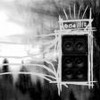 Lullabye Arkestra sunk their talons into me pretty quickly. The album starts with slow, mournful strings and horns that build into a dramatic climax in which the floor suddenly drops out, replaced by the band in full-on assault mode. Before the song even finished, I had to go back and listen to that amazing opening again.
Lullabye Arkestra sunk their talons into me pretty quickly. The album starts with slow, mournful strings and horns that build into a dramatic climax in which the floor suddenly drops out, replaced by the band in full-on assault mode. Before the song even finished, I had to go back and listen to that amazing opening again.
After the soaring bombast of the first track, I wasn’t ready for the rootsy direction the album takes. The band continues with the distorted bass and melancholy horns, but instead of a pummeling charge, they flirt with blues and early rock 'n roll. The emphatic wailing vocals often steal the spotlight while a church organ toils in the background.
Although at first I was disappointed that they took this route after the superb opener, the band’s enthusiasm eventually won me over. Even the slower, minimal "Come Out, Come Out" is a nice shelter from the storms that both precede and follow it. "Nation of Two" finds the group returning to the heaviness of the opener with a blistering, if straightforward, distorted anthem. They slow it down even as they keep the heavy aesthetic on "Bulldozer of Love," this time bringing their horns back to add discordant squalls and squeaks on the song’s periphery. Their final statement is another burner, starting with slow feedback before the band hits together. An ode to rock and roll, it nicely summarizes their varied approach on the rest of the album, alternating between distorted bass and catchy horns and choruses.
Even as my opinion fluctuated somewhat during the early section, Ampgrave won me over on the whole. It’s a fantastic, invigorating album whose only fault is that it’s over far too soon.
samples:
 
Read More
- Administrator
- Albums and Singles
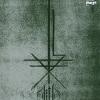 This blacker than black collaboration between Stephen O’Malley and Peter Rehberg is a great piece of mood music. KTL is more subdued than the main output from both of these artists, yet together they instil a palpable sense of tension into the music to give it a captivatingly creepy result.
This blacker than black collaboration between Stephen O’Malley and Peter Rehberg is a great piece of mood music. KTL is more subdued than the main output from both of these artists, yet together they instil a palpable sense of tension into the music to give it a captivatingly creepy result.
Editions Mego
O’Malley and Rehberg paired up to form KTL in order to soundtrack a theatrical work by Gisèle Vienne and Dennis Cooper. The work is called Kindertotenlieder (Songs on the Death of Children), after Gustav Mahler’s musical adaptations of Friedrich Rückert’s poetry. Judging from pictures on the web, Vienne and Cooper’s work is heavily influenced by the Knecht Ruprecht and Krampus traditions of Germanic Europe, as well as using strange dummies of young girls dressed in black metal shirts and hoodies. The music here is not the actual soundtrack for the theatrical work but it is related to the soundtrack according to the sleeve notes. Along with the notes in the booklet come images of anonymous long haired figures and robed beings ascending a staircase, perhaps a nod to the classic cinematic tension in a horror film before the inevitable terror.
The disc's mood is set with the 25-minute long opener, "Estranged," where the feeling of impending doom seeps like blood through a mattress. It is a musical purgatory acting as a prelude into the depths of hell. Hell in this case appears to be a forest as the next four tracks, "Forestfloor 1-4," are inhospitable and startling. Rehberg's contribution becomes more pronounced as shards of noise and sound rip through the mix like glass from a cannon. For the first two parts, O’Malley goes for fast tremolo picking instead of his usual play a chord and holding it for a couple of days approach. The end result is a cold blast reminiscent of some of the winds knifing through the northern hemisphere the last few weeks. The third and fourth parts of "Forestfloor" see O'Malley return to the slow dirge that he is famous for, at the same time Rehberg's equipment sounds like it is on its last legs.
The album finishes with "Snow," which, despite its pretty name, continues the dread that has permeated KTL from the very beginning. The uneasy quietness is deeply unsettling following the chaos of "Forestfloor," only reverb-drenched ambience and a distant high pitched squeal break the silence. It sounds like the unnatural stillness of the aftermath of something violent and bloody. It closes off the album perfectly; there is no real sense of closure per se but instead a feeling of a lucky escape. Next time whatever creature is stalking through the forest might just win.
samples:
Read More
- Administrator
- Albums and Singles
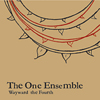 The One Ensemble of Daniel Padden released two fantastic records before Live at VPRO Radio upped the ante immeasurably. The comical and the sublime tendencies of Padden's previous work were married effortlessly in those recordings. Wayward the Fourth is a continuation of the musical environment showcased in those songs: a small step forward from a nearly perfect performance and a chance to hear more songs in that style.
The One Ensemble of Daniel Padden released two fantastic records before Live at VPRO Radio upped the ante immeasurably. The comical and the sublime tendencies of Padden's previous work were married effortlessly in those recordings. Wayward the Fourth is a continuation of the musical environment showcased in those songs: a small step forward from a nearly perfect performance and a chance to hear more songs in that style.
Secret Eye
The One Ensemble's music comes in waves: smokey ones that dance and weave in and out of audible frequencies until they fabricate a space all their own with rules that don't exist for other compositions and definitions that betray the very term. The exotic brew of the east and Padden's own Volcanic whimsy allow the music on Wayward the Fourth to go any direction it pleases and often the instruments and voices employed take sudden turns and execute acrobatic maneuvers that'd make the most talented contortionist wonder about their constitution.
The opening "Joker Burlesque" announces itself quietly, floating into existence on a wave of buzzing strings and odd hums. With the addition of sharply plucked guitars and unmistakably One-ish vocal calls, the album begins to take off, stepping deftly about the room like some hypnotic dancer with seductive intent. As the song washes through the remainder of its nine minute duration, a strange and unsettling calm begins to settle in and Wayward the Fourth sounds as though it might come to an early and quiet end, harkening back to the Ensemble's debut release. "Neither One Thing" quickly erases that notion with a quirky chorus of high-pitched voices, a walking acoustic guitar, and the simple flourishes of other stringed instruments. There's something truly child-like about the music and as "Shapes Disguised as Sizes" begins to stomp about it becomes difficult not to imagine this as the soundtrack to some very imaginative child's mind. Being carried away by all the sensuous arrangements, off-kilter voices, and dance-inducing rhythms is easy and imagining a world of strange creatures inhabiting the world this music exists in is even easier.
"Smok," for instance, brings to life a world of sailors weary from the sea and drunk on the docks, celebrating the chance to relieve themselves from work for one night. The music rotates and swings to and fro before engaging a cinematic aura and developing an entire story about the history of the sailors and their voyage. The second-longest piece on the record, "Resonant Kings," sounds precisely as it is named: it swells and whispers gently underneath the steady playing of a circular acoustic melody highlighted by dramatic and urgent strings literally propelling the song along. The sharp rhythmic dynamics and brisk cadence thrust this song to the center of the album and give it a heavy weight. This is less a reverie and more an intense moment replayed over and over again, with the consequences always held just out of view. Padden and company do a superb job and switching between these moods and between various modes of expression, whether playful or serious. This easily matches the performance on Live at VPRO radio as a whole and presents a whole range of ideas that sit extremely well next to each other. It's proof that the genius heard there was no mere fluke and that Padden and his band still have a lot of music left in them.
samples:
Read More
- Administrator
- Albums and Singles
 Pulled from the nowhereland of the out-of-print CDR graveyard, this 10" re-release of Burning Star Core's 2003 Amelia EP is probably the only decent chance that we the latecomers will get to grab these three tracks. This, the first of six vinyl BxC releases in 2007 from the No-Fi label, will hopefully help to shine a little more much overdue light on Spencer C. Yeh's project. Music this good shouldn’t be left to fall prey to disc rot.
Pulled from the nowhereland of the out-of-print CDR graveyard, this 10" re-release of Burning Star Core's 2003 Amelia EP is probably the only decent chance that we the latecomers will get to grab these three tracks. This, the first of six vinyl BxC releases in 2007 from the No-Fi label, will hopefully help to shine a little more much overdue light on Spencer C. Yeh's project. Music this good shouldn’t be left to fall prey to disc rot.
Two of these cuts might have already been made available on the Mes Soldats Stupides 96-04 compilation CD, but that still left the middle track "Homing Pigeon" lost in the wilderness. Relying more on electronics and almost imperceptible melodies than his violin / vocal techniques, this is amongst his finest material to date.
Opening the first side like a woozy Tangerine Dream outtake, "I Wanna Make a Supersonic Woman of You" is a lopsided siren synth piece that's quickly decaying at the fringes into fading tatters. There’s a great rise and fall through the song that brings to mind some huge empty landscape, an ambitious widescreen melancholy. Great swabs of lump in throat melody float like great blue glaciers as it grows and shrinks. "Homing Pigeon" sits in the peculiar space between frantic scrabble and intricately precise work as pencil lead glitches drop like an opened barrel of nails through the track. A databank of trapped percussion is accidentally half-formed into structures upon collision then scatters across the track. Through the clashes of construction and sounds a warm melody comes up and through the ice like a faint pink glow. The sense of organic warmth is what these tracks tick, and well worthy of re-release.
The lengthy flipside, "The Point of Departure is not to Return," concentrates on livelier electronics, keeping the devil in the detail. The quickly circling quieter patterns seem to spin dizzyingly fast when focused upon, as the bigger picture settles as a crystal mess of notes. Burning Star Core haven't stopped moving yet, but taking the time out to catch up isn't always this rewarding.
samples:
Read More
- Matthew Amundsen
- Albums and Singles
Apart from some tracks like "Over and Over," "(Just Like We) Breakdown," or "And I Was a Boy From School," much of the album is typical dance music with an affectation of self-importance. When the band tries their hand at ballads, such as "Look After Me," the results are even worse. Their macho taunts on the title track are just silly, especially since the rest of the music doesn’t reflect their tongue-in-cheek intentions. There isn't a whole lot going on here to distinguish Hot Chip from a dozen other groups making music like this. Yet the album isn’t a complete write-off. The best tracks deserve to be compiled alongside their peers, and perhaps clever remixes will grant them a longer shelf life. As a complete work, however, The Warning didn't hold my attention.
Read More
- Scott Mckeating
- Albums and Singles
Alex Cobb's Taiga Remains project has always catapulted aural sparks into the foreground, but this 3" CDR pretty much destroys all competition. Burning huge sunspot holes into the hear-and-now this packs more heat than Schwarzenegger used to before he went political/uber-fascistic, and without the aggression.
Saturating sound of images of some huge bizarre and charred Blakeian monstrosity, this single 11 minute track spills heat like a wrecked oven. With everything here generated from the manipulation of acoustic guitar and delay, the focused intensity is surprisingly powerful. The sitar-like buzzing sounds like cat gut strings burned chokingly taut by sunlight. But instead of careering incontinently into white-out there are creeping burnt edges, melting slowly into gold instead of blackening and curling. Shimmering single drones delicately waver like a choir of "om"ers that sidle up to the shake of forty tambourine shaking priestesses. Even the can't-be-human sounding groaning drones underneath can’t make this release sound it’ll do anything other than boil your eyes.
Read More
- Administrator
- Albums and Singles
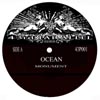 Ocean's demos are not earth-shattering examples of metal but they are genuinely great shards of doom. The two songs here should have been included (even as a bonus disc) with the debut album, Here Where Nothing Grows. While it's great they're now available, this limited vinyl-only pressing means that they will not get the deserved coverage.
Ocean's demos are not earth-shattering examples of metal but they are genuinely great shards of doom. The two songs here should have been included (even as a bonus disc) with the debut album, Here Where Nothing Grows. While it's great they're now available, this limited vinyl-only pressing means that they will not get the deserved coverage.
Although these two songs didn't fit in to the band's debut, the formula is the same: tune everything way down, chug and slowly swim through tar until the song ends. As formulaic as they are, it works well.
“Monument,” is a nice example of doom being played without pretensions. The vocals owe more to Norway’s finest black metallers than to St. Vitus but they work well within the frame of the song. The thump of the drums is invigoratingly clear. With all the sludge being pushed around by the guitars and bass the drumming cuts through like a beacon. On the flip side, "Fork Lashing Eye" sees the black metal influence creep out of the vocals and into the music. It is less adventurous than their smelting of black and doom metal on Here Where Nothing Grows but I found this a lot more exciting to listen to.
As much as I liked their album, it did lumber along a bit, adding length to the pieces for the sake of it. Here the songs are just the right length (and at about 15 minutes they are quite generous) for what they are which is old fashioned, no frills doom. A tendency towards adding an “avant metal” edge (i.e. The Wire-friendly) to the songs on the album worked against them while here, the purer and harder hitting style employed by the band works in their favor.
The only minor issue that holds these two songs back is the quality of the recordings, specifically the vocals and how the songs are mixed. Most of the music sounds fine but the vocals are lost on both songs. Also, the drums seem pushed too far forward in the mix on “Fork Lashing Eye.” While these things are noticable, they don't impact my enjoyment of the record in any way.
This is only available on LP so no mp3 samples, apologies!
Read More
- Administrator
- Albums and Singles
 More analogous to the filthy, funky Ed Banger and Gigolo labels than meathead pop-trance jingles, this album certainly wont revolutionize electronic music, though it will compel clubgoers worldwide to shake their asses and rock to the beat. It's abundantly clear that DJ Splank, also known as John Starlight, can't run fast enough away from his past.
More analogous to the filthy, funky Ed Banger and Gigolo labels than meathead pop-trance jingles, this album certainly wont revolutionize electronic music, though it will compel clubgoers worldwide to shake their asses and rock to the beat. It's abundantly clear that DJ Splank, also known as John Starlight, can't run fast enough away from his past.
Back in 1999 when Zombie Nation was a duo, it delivered "Kernkraft 400," a catchy little electrowave track that ultimately spun out of control and, thanks in part to some obnoxious remixing, became one of the most well-known and overplayed dance tracks ever. While I sincerely hope that Splank continues to receive deserved financial compensation for what is now known as a sports stadium anthem catchy enough to threaten Gary Glitter's foothold, I find it relieving that Black Toys doesn't try to recreate that commercial success.
Today's Zombie Nation produces hedonistic techno thankfully devoid of Detroit's futurist philosophizing or Berlin's clinical abstraction. Packed with squelchy, dirty grooves salvaged from the smoldering husk of electroclash, Black Toys succeeds where many artist albums so excruciatingly fail in this predominantly single-based culture. "Booster," also released as a 12" single, kicks things off with a restrained mix of quirky rhythmic minimalism and melodious lo-fi synthwork. Similarly, and perhaps to greater effect, "All Or Nothing" updates the bliss of Sheffield techno visionaries Sweet Exorcist and LFO with the bleepy bassy stabs and a rolling 4/4 groove. "Slomo" not only drops the tempo, but brings a whimsical flair to the cripplingly serious dubstep genre its beat so closely resembles. It takes nearly two minutes before the secret disco funk plot begins to hatch on "Peace And Greed," a killer cut that both wondrously references and progressively revamps the lost French sound of the tragically defunct Roulé and Crydamoure imprints. Zombie Nation looks to the past like some of us reach for a telephone, though his dependence on retro styles actually supports his own individuality as opposed to hindering it.
A ten minute long bonus remix of the riff-heavy title track proves to be an unnecessary and deficient end to an otherwise generally likeable album. Still, this final indiscretion can be overlooked after so many memorable and feel-good tunes.
samples:
Read More
- Administrator
- Albums and Singles
 ...
... ...
...
Originally released on 20 November 1980, the deluxe cassette compilation From Brussels With Love featured 22 exclusive tracks from the front rank of the international avant garde and new wave, as well as several artists from the feted Factory Records stable in Manchester. Although the first proper release on boutique Belgian label Les Disques du Crepuscule, the catalogue number assigned to the project (TWI 007) betrays the fact that the early history of the label (and thus its debut) is a little more involved.
The label had been formed at the beginning of 1980, by Brussels scenesters Michel Duval (an economist by training, and journalist for several arts magazines including En Attendant and Plein Soleil) and Annik Honore (then working in London, but a booker for the seminal Plan K venue, and also writing for En Attendant). A strong cultural link was forged between Brussels and the Factory/Manchester cadre after the Joy Division concerts at Plan K on 16 October 1979 and 17 January 1980, and cemented when A Certain Ratio, Durutti Column and Section 25 performed at Plan K on 26 April. In addition, Brussels band The Names had joined the Factory roster.
Since the Factory bands were so prolific, it was agreed that 'spare' recordings could be released on the Continent via a new label, Factory Benelux. The first three releases were 7" singles by A Certain Ratio (Shack Up), Durutti Column (Lips That Would Kiss) and Section 25 (Haunted), which appeared in August, September and October respectively. All carried dual catalogue numbers (FACBN 1-004, 2-005 and 3-006), which in September 1980 resulted in Factory directors Rob Gretton and Tony Wilson insisting that a clear division should be established between Factory Benelux and Les Disques du Crepuscule, the new label planned by Michel and Annik. At an early stage the duo were joined by gifted designer Benoit Hennebert. Crepuscule, of course, translates as 'twilight', an evocative name suggested by Annik. The two labels shared a de facto office at 32 Avenue des Phalenes, 1050 Brussels.
The first true Crepuscule release was a deluxe cassette/booklet package, From Brussels With Love. Compiled between July and October, this stylish 80 minute compilation arrived housed in a plastic wallet and reflected current musical events in Manchester, London and Brussels during the middle months of 1980. In May Joy Division singer Ian Curtis took his own life, leaving the remaining three members to re-group as New Order, who entered the studio for the first time in June as backing musicians for Factory troubadour Kevin Hewick. Bill Nelson and Richard Jobson came into contact with Crepuscule for the first time on 27 June, after playing at a Cocteau-themed event at Plan K, at which Vini Reilly of The Durutti Column also performed. London band Repetition joined Crepuscule via Annik and (surprisingly) found themselves produced by Rob Gretton, while A Certain Ratio contributed a live track taped at Hurrah's in September, during the first Factory trip to New York, another cultural watershed for all involved.
Besides Factory, another crucial influence on From Brussels With Love was radio producer and new music composer Wim Mertens, whose book American Minimal Music had just been published by Kahn & Averill. The featured interview with Brian Eno had been recorded by Wim in New York in June 1979, as was the recording by Phill Niblock. It's therefore hardly surprising that Michael Nyman and Gavin Bryars also agreed to contribute tracks. Mertens would make his own debut on Crepuscule (initially as Soft Verdict) the following year. Eno's Obscure label was another key influence on early Crepuscule.
The compilation was purposefully international in scope, with France (Radio Romance), Belgium (The Names), Germany (Der Plan) and even Scotland (Richard Jobson) all represented, as well as the more familiar British and American contingents. The design, too, was seductively Continental, with text printed in a variety of languages, and copious line/cartoon illustrations by Jean-Francois Octave which reflected the Belgian and French obsession with bande dessinee. The James Bond references in the title and catalogue number may be credited to cinephile Michel Duval alone.
Almost as interesting are the tracks that failed to make the final cut: at various stages the wishlist included music by Mark Beer, The Associates, Throbbing Gristle, Karel Goeyvaerts, plus mooted live tracks by Joy Division, and literary interviews with Marguerite Duras, Michel Tournier and Alain Robbe Grillet. Released on 20 November in an initial edition of 1000 copies, TWI 007 was an immediate success, retailing at the price of a 12" single and drawing praise from the British music press in December:
"The arrival of this thin tape from Belgium provides a reminder - without really trying, without being obvious - that pop is the modern poetry, is the sharpest, shiniest collection of experiences, is always something new… It's as indispensable as the Bow Wow Wow and A Certain Ratio cassettes: all in their own way point to the ways pop is moving… Of course it's posey: what isn't? It's pop/art. Insufferably over-fashionable, lavishly over the top, dreadfully dilettantish, finely eclectic. Pop can be so many things" (Paul Morley, New Musical Express)
"This is wild! This is fantastic! The perfect Christmas gift! FBWL is over 80 minutes of sheer scrapbookalia. It is a lovely put together way of deflating modern music, and at the same time of exalting its basic merits. A searing, sprawling, exotically chaotic way of achieving the almost impossible and restoring rock music to something that will nearly surprise you… It is endless and endlessly, genuinely entertaining listening. As pretentious as hell, of course, but there is only one thing worse than that - and that's not being pretentious. This tape, a long mysterious piece of collective modern overdrive, points to a future somewhere. And it looks more crimson that rosy, it's that good" (Dave McCullough, Sounds)
While Crepuscule was by no means the first modern independent record label in Belgium (credit is also due to Crammed, Sandwich, Double Dose and others), it quickly became the most prolific, cosmopolitan and culturally significant. The next 18 months saw a raft of releases by a veritable internationale of artists including Antena, Gavin Bryars, Cabaret Voltaire, Paul Haig, Ike Yard, Josef K, Malaria!, Marine, Wim Mertens and Tuxedomoon, and further landmark compilations such as Ghosts of Christmas Past and The Fruit of the Original Sin. Indeed the label would even outlast Factory, the label to which it owed a large measure of its early success.
This remastered CD (2006) version of TWI 007 features all tracks included on the 1980 cassette version, with the exception of Felch (live) by A Certain Ratio, left off for reasons of space and in any event included in LTMCD 2443. A second edition of the cassette (also TWI 007) appeared in a standard cassette box in 1981, and a double vinyl edition (TWI 008) in Japan in 1983, with several different tracks. A final (and much adulterated) version of From Brussels With Love appeared on double vinyl and CD in 1986, but with only around half the original tracks from the original cassette. The 1980 edition, however, remains the definitive artefact.
James Nice
November 2006
CD tracklist:
JOHN FOXX A JINGLE *1
THOMAS DOLBY AIRWAVES
REPETITION STRANGER
HAROLD BUDD CHILDREN ON THE HILL
DURUTTI COLUMN SLEEP WILL COME
MARTIN HANNETT THE MUSIC ROOM
THE NAMES CAT
MICHAEL NYMAN A WALK THROUGH H
BRIAN ENO INTERVIEW
PHILL NIBLOCK A THIRD TROMBONE
JEANNE MOREAU INTERVIEW
RICHARD JOBSON ARMOURY SHOW
BILL NELSON THE SHADOW GARDEN
DURUTTI COLUMN PIECE FOR AN IDEAL
KEVIN HEWICK & NEW ORDER HAYSTACK
RADIO ROMANCE ETRANGE AFFINITE
GAVIN BRYARS WHITE'S SS
DER PLAN MEINE FREUNDE
B.C. GILBERT & GRAHAM LEWIS TWIST UP
JOHN FOXX A JINGLE *2
Read More
- Administrator
- Albums and Singles
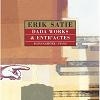 With yet another Satie collection, LTM is doing great justice to the composer who is oft overlooked but is as important to modern music as any of the trendy experimental composers that get all the limelight. By today's standards much of Satie's work is far from revolutionary, in fact, much of it has fallen into the realm of cheesy but like any art, the original still packs a punch. This collection is the first to cover his Dada-related works.
With yet another Satie collection, LTM is doing great justice to the composer who is oft overlooked but is as important to modern music as any of the trendy experimental composers that get all the limelight. By today's standards much of Satie's work is far from revolutionary, in fact, much of it has fallen into the realm of cheesy but like any art, the original still packs a punch. This collection is the first to cover his Dada-related works.
LTM
Some of these pieces are new to me, some aren’t new but they are far from familiar. At first, Trois Morceaux en Forme de Poire sounds like it is going to be a dull cabaret piece but Satie quickly throws in some curve balls. Almost like the collage technique associated with Dada, Satie seamlessly changes the form of the piece whenever he feels the need. There are slight snippets that are almost recognisable from other pieces, cut out and pasted in like pieces of newspaper in a traditional collage. Despite being broken up into movements, there is that much chopping and changing that it may as well be all one piece. The most interesting thing to note about this piece is that it predates the Dada movement by about 16 years! However, it was performed at a Tristan Tzara soirée in 1923 as Satie felt that these pieces were in Dada’s spirit.
Relâche is divided in two by an entr’acte (between act interval) entitled Cinema (the one piece I have heard before). Relâche was the score for a ballet by Francis Picabia and Cinéma was the soundtrack for a film shown in between the two acts of the ballet. Although only the arrangement for piano is utilized on this recording, the score was originally intended for an orchestra. It would be nice if LTM would consider releasing an orchestral version of these pieces. Not to say that the piano here is anything but great. Pianist Bojan Gorisek is no stranger to Satie and it is possible to hear his enthusiasm for Satie with each note. He plays with a light heartedness and gusto that suits the pieces down to the ground. His performance on the “Chasseur; et début de l’enterrement” episode of Cinéma captures the poignancy of the piece; a death march augmented by Satie in what would prove to be his last composition.
While these were all utilised in Dada activities, it is hard to pigeonhole Satie in as another Dadaist. He was a surreal Dadaist and a Dadaesque Surrealist and he was neither at the same time. This collection captures his spirit more than the Dada spirit (and Gorisek channels Satie's spirit well). It is one of the better entries in LTM's ongoing Satie review, as well as being musically rich, the sleeve notes are also worthy of mention. They include a lot of useful information and pictures although, inexplicably, Man Ray's “Gift” is thrown in amongst the pictures of Satie, posters for his events and photos of the stage layouts for Relâche (though I suppose that it is a Dada statement on the designer's part). Dada Works & Entr’actes is a great piece of Satie and as a fine commentary on Dada from the Satie perspective.
samples:
- Trois Morceau en Forme de Poire: "Maniere de commencement"
- Ragtime Dada
- Cinéma: "Chasseur; et début de l'enterrement"
Read More

